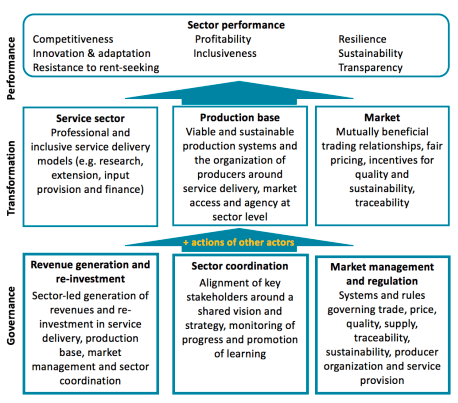Reaching beyond the value chain – How sector governance can improve agricultural commodity sectors


The last two decades have seen an increasing emphasis on company and supply chain driven approaches to promote sustainable production and trade of agricultural commodities. Large food and commodity traders, processors and brands – sometimes supported by development donors – have congregated around the value chain as the focus for interventions in support of legality, sustainability, productivity and quality. These initiatives have sometimes achieved remarkable success with benefits to both farmers and commercial partners. However, there are many situations where the successes of individual supply chain projects are limited by the wider sector dynamics and consequently do not improve the overall performance or resilience of a sector.
National commodity sectors can have structural weaknesses that undermine the performance of agriculture and value chain actors. Dynamics which undermine supply chain approaches include price volatility, poor quality management, weak organization of small-scale producers and poor service provision. There is increasing awareness that to reach scale and sustainability, inclusive chains need to be part of more inclusive and stable sectors. The sector rules and governance create the context in which more inclusive value chains can operate and succeed (or fail).
Relatively little attention has been paid to how to proactively create sector structures and mechanisms that support more sustainable livelihoods for farmers sector-wide. To bridge that gap in understanding the role of sector governance in the 21st century, IIED and Aidenvironment, in partnership with the Sustainable Food Lab, have conducted a scan of existing sector governance models in thirteen case studies to better understand how these sectoral models work to improve sector performance. To view the report:
- See for full report
- See for summary report
